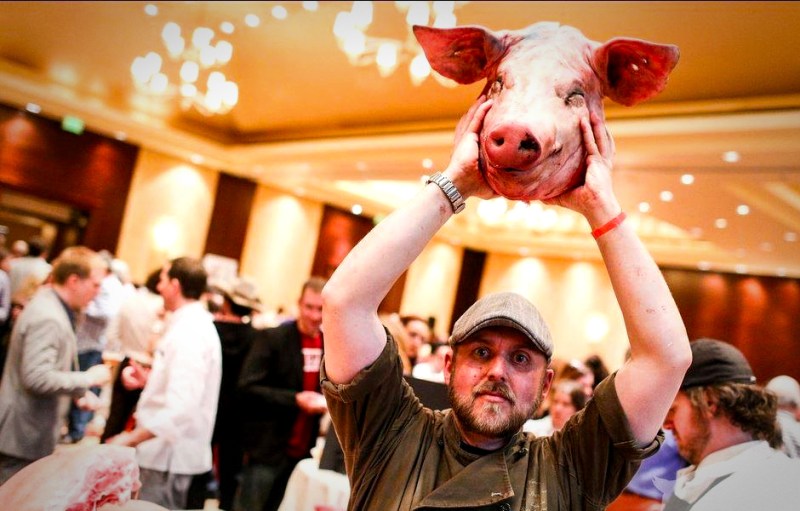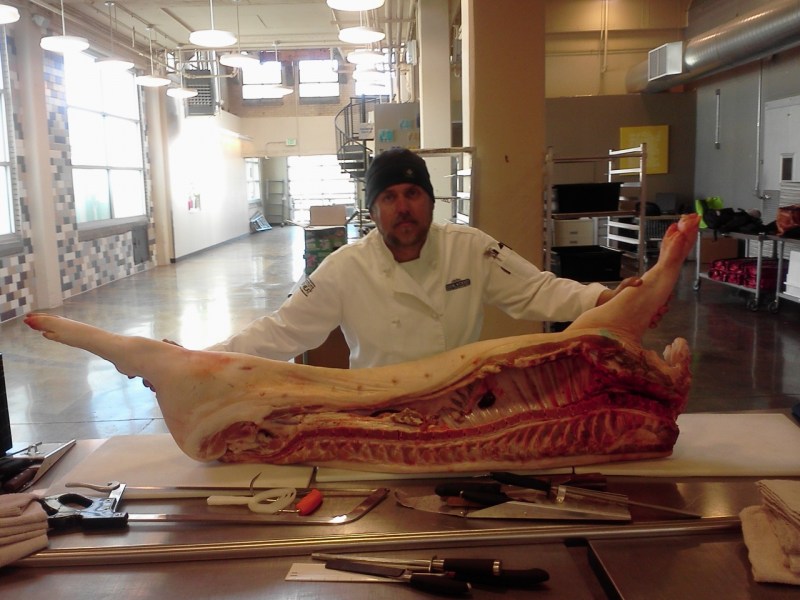Here at The Manual, we take every opportunity possible to cook, eat and talk about our favorite ways to savor meat. But there is one category of animal protein we haven’t explored much when it comes to barbecue – game meats. Not that we don’t love them, but it’s just not often you see elk or pheasant on the menu at your local smokehouse. So to educate ourselves a bit on the subject, we brought in expert Jason Nauert to teach us more about the butchering and barbecuing of wild game.
Related Reading
Not only does Jason have decades of experience hunting and preparing these animals nose to tail, he is a director and instructor at the Rocky Mountain Institute of Meat and co-founder of Primal Meat Co. He developed a Practical Field Butcher course for the U.S. Army Special Forces and helped design the meat curing chamber at Chef Hosea Rosenberg’s restaurant Blackbelly in Boulder, Co. And he loves BBQ as much as we do, so we knew he was the right man to guide us down the path to wild game enlightenment. Check out our interview with him to learn more about his background, the best game meats for beginners and how to BBQ them like a pro.

You’ve been butchering game animals, from rabbit to elk, for about 30 years. Was hunting, butchering and cooking game meats a part of your upbringing? What made you decide to start doing it full time?
Yes, hunting, butchering and cooking the harvested meats were absolutely a part of how I was raised and who I am today. Growing up just minutes away from Pikes Peak in Woodland Park, Colorado allowed me the freedom and opportunities to hunt in the winters and fish and camp in the summers.
After working in construction, then law enforcement and, more recently, landscaping, I found myself feeling unfulfilled. I realized nothing makes me happier than being in the kitchen or in the woods hunting for my food. I wanted to do something that was inspiring to me and hopefully others in my life. In 2012, with the encouragement and support of my wife, friends, and family, I decided to make the life-changing decision to pursue a culinary career, more specifically, butchery.
A couple years ago, you created the Practical Field Butcher course for the U.S. Army Special Forces. What drove you to start this program? Could you speak to the skills taught in the course and how they apply to everyday life in the military?
I received an email around March/April of 2014 asking what kind of courses we offer and if we could create a field butcher course to fit the needs of the Army Special Forces. After some long, sleepless nights thinking it over and over in my head, it hit me – not so much the work I needed to do and how quickly it needed to be done, but who was going to benefit from it. That was my motivation. Who better to create this for than those who work so hard for us? I was inspired to create a program based on our Professional ACF Accredited Butchers course, customized for the field. I felt motivated to meet the unique needs of the Army.

The skills I teach them in the field and kitchen translate into a new way of looking at meats, not only a “this is my food, I have to eat it” mentality. It challenges them to think about meat differently, like this is part of an animal and I can use it in this many ways. A good example is, when purchasing meats, they have new knowledge of what different cuts of meat actually are, how to extract them, knowing if it’s good or bad (safe to eat) and how to prepare it in the best manner (safely and sanitarily). It’s also about what cuts are a better value or “bang for your buck cuts.” They get a true understanding of what it means to get a whole animal from a supplier and break it down into edible portions. They learn to do this with few tools and have minimal waste when complete. I like to preach whole animal utilization or nose to tail butchery.
Related: Eat This: Berkshire Pig Head Carnitas at CBD Provisions
We love game meats, but they can be daunting for some first-timers out there. What are some of the best animals to try first if wild meat isn’t yet a part of your diet?
For the first-timer jumping into game meats, I would say start with rabbit and game birds like pheasant and quail. The game birds are not too different from chicken but just enough that they’re a good start, especially when it comes to cooking. Same with rabbit. It’s a nice, mildly flavored protein but needs a little finessing when cooking. If you want to jump into the bigger game, I’d recommend elk because tastes and cooks a bit like beef. But be very careful not to overcook it! In my opinion, the best way to start preparing wild game if you’re not a seasoned cook is to make stews and utilize a Crock-Pot.
As bonafide BBQ lovers, we want to know how to prepare as many meats as possible. What are some of your favorite game meats to BBQ? Any special recipes or techniques we can try at home?
BBQ! A couple of my favorites to BBQ are elk or deer ribs and whole wild turkey. The best thing to do to the ribs and turkey is brine, brine, brine. Brining wild game is a great way to get the meat really hydrated before cooking because it turns what is usually a dry meat into a juicy meat. You can find brine recipes all over the internet, and I’d recommend brining for a minimum of 24 hours depending on the weight and cut of the meat. I really don’t have a favorite brine because I like to experiment with flavors often and use new ingredients. Once I’ve brined the meat, I like to do rubs. I’m not particularly married to a dry versus a wet rub, but I am particular about how much heat (pepper Scoville units) I have in it. I prefer a nice sweet and spicy rub over traditional BBQ sauces. I’ll stress this more than anything with any wild game BBQ: cook it very slowly at very low temps until it reaches USDA recommended cooking temperatures. I hope anyone who has been either intimidated or unsure of what to do with wild game can use this bit of information to jump in!
To learn more about Jason and the work he does, visit him at jasonnauert.com.
Editors' Recommendations
- How to make Korean BBQ at home: Everything you need to know
- What are the Meat Sweats and How Can You Avoid Them?


